E-ONE has delivered its first 100-inch-wide Cyclone chassis and cab HR100 aerial ladder quint on a single rear axle to the Peru (IL) Fire Department. Peru is a town of nine square miles and more than 10,000 population that has 24 paid, full-time, and on-call firefighters and drivers, as well as its chief.
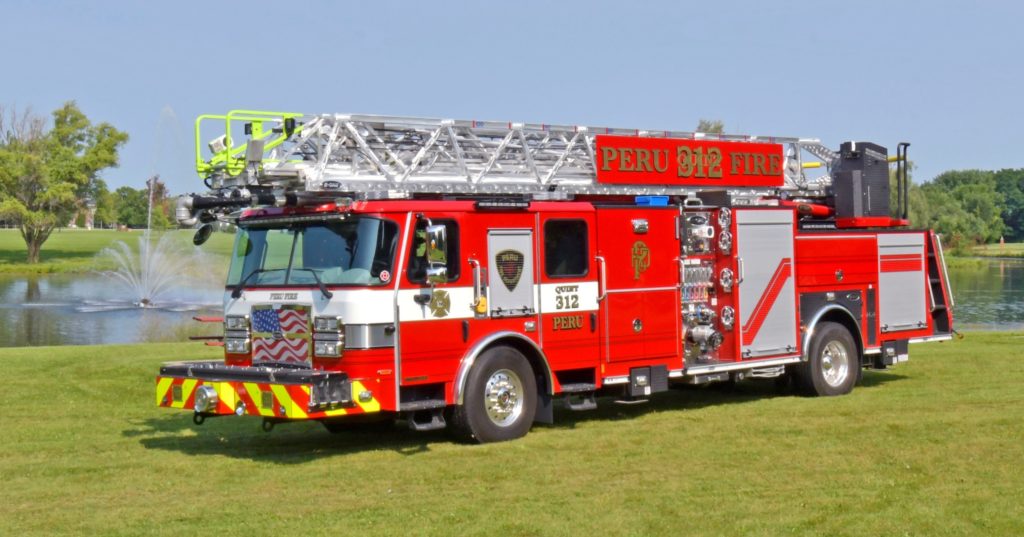
Andy DiVerde, sales representative for Fire Service Inc., who sold the HR100 to Peru, says the fire department was originally looking for a 75-foot aerial quint, but when he brought an HR100 unit over to them and showed its capabilities, especially with additional reach, the department was very interested. “Their main concern was whether the HR100 would fit in their station,” DiVerde points out. “We took it over there and it fit perfectly in their station.”
Joe Hedges, E-ONE’s product manager for chassis and aerials, says that E-ONE introduced the 100-inch-wide Cyclone cab at FDIC International 2021 in Indianapolis, IN. “The HR100 has a 24,000-pound front axle, and a 35,000-pound Meritor rear axle with a Hendrickson RoadMaax® rear suspension, and electronic stability control,” he says. “The quint has a 450-horsepower (hp) Cummins L9 diesel engine, and an Allison 4000 EVS automatic transmission, with seating for four firefighters in the severe duty cab, with three of them in USSC Valor SCBA (self-contained breathing apparatus) seats that have IMMI ReadyReach seat belt extenders.”
Hedges says the quint has a dropped front frame extension with tow eyes, a zinc spray-coated frame and outrigger beams for corrosion resistance, an integral torque box frame, and four under-slung criss-cross outriggers with an 11-foot jack spread. “The quint has a Waterous CSU 1,500-gallons-per-minute (gpm) single-stage pump, a 500-gallon T-shaped water tank with a lower compartment under the tank, and a SideStacker hose bed that holds 800 feet of 5-inch large diameter hose (LDH) with side access doors so firefighters can get into the hose bed from the ground for reloading.”
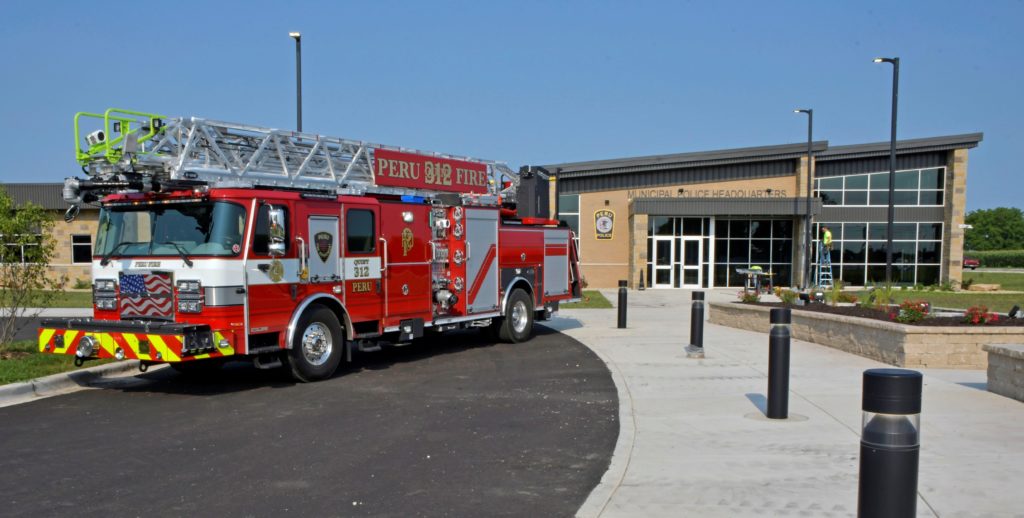
The HR100 has a welded extruded aluminum ladder, Hedges says, that has a 750-pound dry and 500-pound wet tip load, and a 2.5 to 1 safety factor, which is 25% more than the NFPA standard requires. “The truck has an advanced aerial control system that’s electric over hydraulic for smooth aerial operations, has a Task Force Tips (TFT) 1,000-gpm Typhoon electric wireless control monitor with a VUM (valve under monitor) and a 2-1/2-inch discharge,” he adds. “The monitor has stacked tips and can be pinned between ladder sections three and four. Peru chose to have red LED lights along the length of the aerial ladder.”
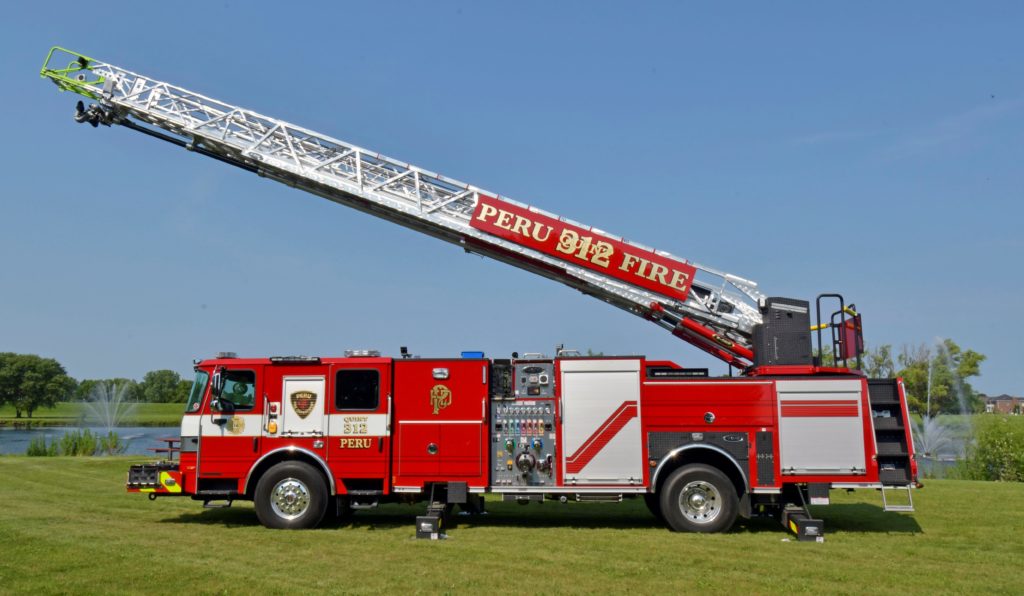
Nick Biagioni, Peru’s assistant chief, says the department replaced a pumper with the HR100 quint. “We have a 100-foot platform that struggles to get down the brick roads in the Victorian area of town where there are very narrow streets and tight corners,” Biagioni notes. “We went with the HR100 on a single rear axle because of its shorter wheelbase, and also because it gives us 25 extra feet of ladder over a 75-footer. Some of the setbacks on our subdivisions are pretty far so the extra length will come in handy.”
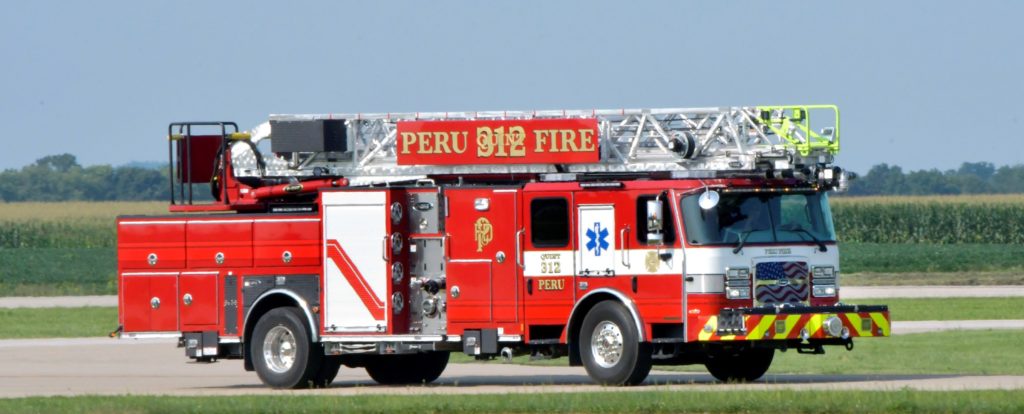
Biagioni says the quint operators also like the fact that the 11-foot jack spread allows them to set up in tight spaces. “The outriggers don’t spread out past the open doors of the truck,” he observes. “So if you can open the doors on the truck, you won’t have any issue with setups. We also liked the fact that the torque box is part of the frame on the HR100. We tried to simplify this truck as much as possible and still have it very versatile.”
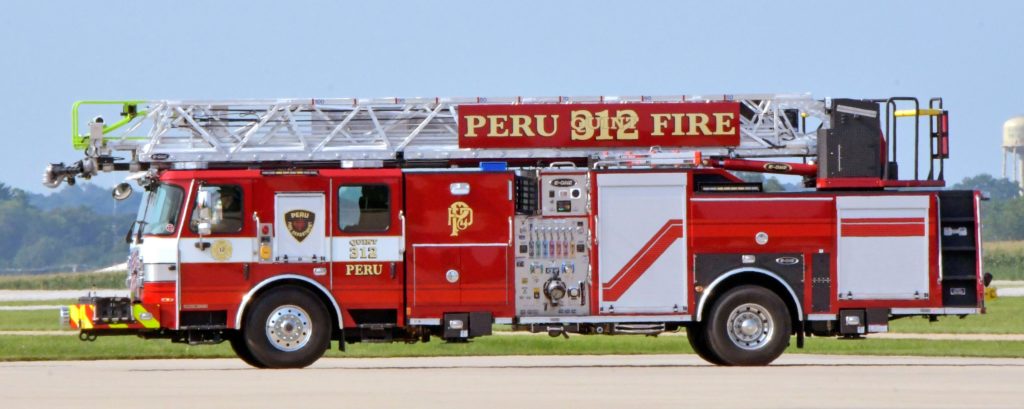
The quint carries 156 feet of ground ladders, Biagione says, “144 feet of them in a ladder tunnel, with a 12-foot roof ladder on the base section of the aerial, and a tube for a 12-foot pike pole and an axe bracket on the fly section.” Lighting on the truck includes two Whelen Vertex LED strobe lights that give 360-degree output, Whelen LED Pioneer Summit brow lights, and four 12-volt Whelen Summit LED lights, two on each side. The quint also has three Federal Safety cameras (left, right, and rear) tied into the Weldon V-MUX system, cellular based AXIS™ Smart Truck technology, and a FireCom 5100D wireless intercom system in the cab.
ALAN M. PETRILLO is a Tucson, Ariz.-based journalist, the author of three novels and five non-fiction books, and a member of the Fire Apparatus & Emergency Equipment editorial advisory board. He served 22 years with Verdoy (NY) Fire Department, including the position of chief.

